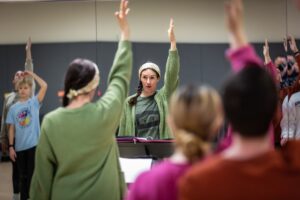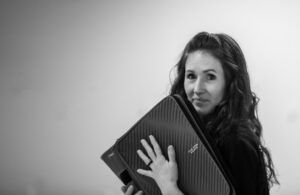
Matilda is a unique musical. It’s a dark story with unsettling plot points and themes. Children are characters, and in our production children were in the cast. Often children are among the audience–in this area, children are often a target of the show’s marketing. Some of the music is off-putting. “Loud” is an example of artful construction that is meant to be something different than pleasing. For me, Matilda exists in the incredibly interesting space of being a show that I think is intentionally crafted with real artistic ability, but isn’t a delightfully enjoyable show. I think that’s on purpose, and that’s part of why the show is so enticing to work on.
Matilda at Centerpoint Legacy Theatre was directed by Emily Wadley and played to sold-out audiences earlier this year. I enjoyed puzzling out what I could bring to the production that fit with the producer’s priorities and the director’s vision. What I want to delve into here are some very specific things I learned about myself as a choreographer that will continue to inform my process going forward.
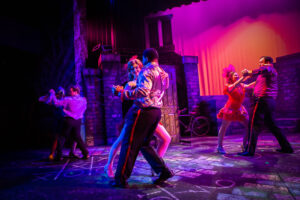
Dance Callbacks
I wanted to do something different for dance callbacks and it felt like a bit of a gamble. I decided not to teach a routine. Everyone would dance the whole hour, with my taking notes on performers between songs and asking performers to shift where they are in the room periodically so everyone gets a clear line-of-sight with me for an equal part of the hour. Basically, it was a theatrical Zumba class based on ballroom steps–I danced facing them, they followed along, and we spent large chunks of each song repeating the same steps. We danced to Latin music like Despacito, Bailando, Sophia, Subeme la Radio, and Hasta Luego. We learned the basic steps and simple variations of Rumba, Salsa, Cha Cha, Paso Doble, and Bachata.
I think this approach turned out great! I received so much information about the performers as dancers and, from what I heard, the auditioners had a really enjoyable time. At the very least, they got real exercise and skill-building just from the callback. This idea specifically addressed the needs and time constraints of this production. I may not find it as valuable to structure every future dance callback in a similar way, but I’m definitely going to keep it in my toolkit.
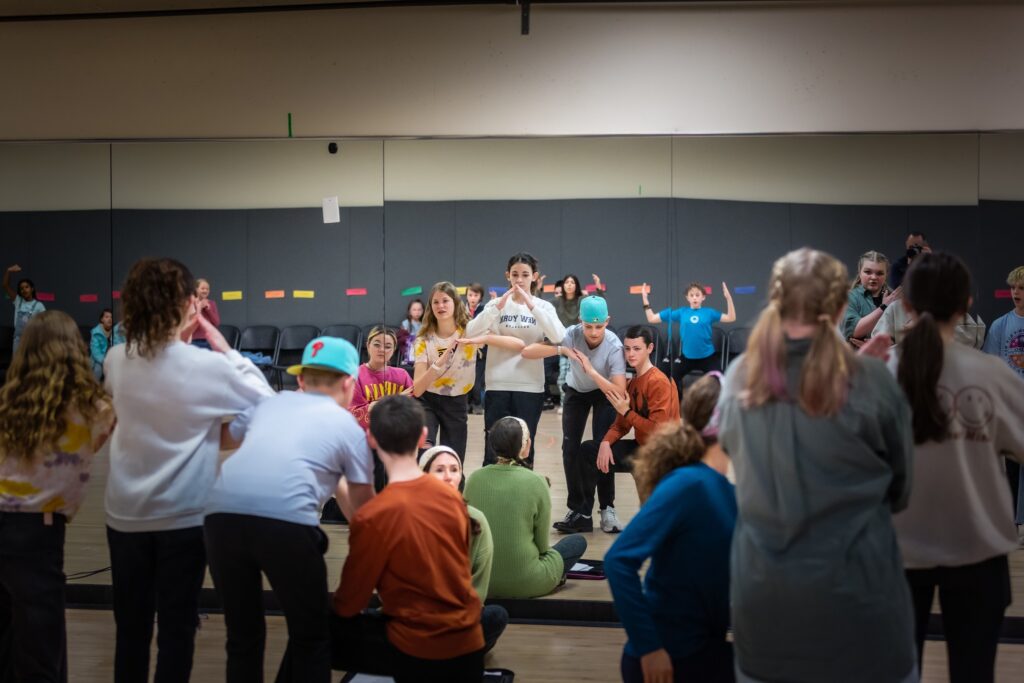
School Song
“School Song” is traditionally done with some ABC props, but I wanted to avoid the logistics of that as well as play with my own idea. I made notes on how the actors might shape the letters out of their bodies. I identified a leader in the cast among the teens and asked him to coordinate creating each letter with a subset of the cast during rehearsal time. They collaboratively generated the shape of the letters, took a photo of each arrangement, and emailed them to me. I wrote on the digital photos which character would take which place in constructing the letter and how they would enter and exit the structure of the letter. Then we spent a good chunk of time following the plan. That prep work and collaboration paid off! Massive thanks to the teens who created and performed these letters, especially to Ben who organized things and became one of my dance captains.
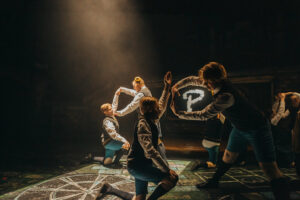
“The THING”
There was a number that I kept wondering about after we opened. The cast performed exactly what I had created, but it wasn’t “doing the thing” I wanted the number to do. It was clear to me that I hadn’t constructed it to do “the thing.” It was entertaining, it was sharp, it was fun, but I felt something was missing. Obviously, I had not articulated sufficiently to myself what “thing” I wanted the number to do. So I kept thinking about it. About a week after opening, I was in the shower and insight washed over me. What I had done was choreographed the text of the number. What I should have done was choreographed the subtext of the number. I felt like it was such an amateur mistake, especially for a choreographer who comes to this from an acting, then directing, university-trained theatre background. I was embarrassed for myself and laughed in the shower. Oh well. Art is never perfect, and here was a reminder I needed so I could continue to grow in my work. Sometimes, it’s back to the basics.
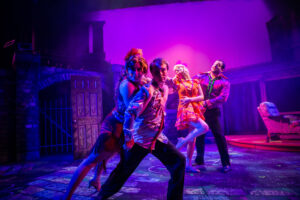
Choreography and Consent
While choreographing Matilda, I was mid-certification in IDC’s Consent-Forward Artist program. In choreographing “Loud” as a Latin ballroom dance number, I wanted to implement the consent-forward practices I’d been studying and committing to. I structured the teaching of “Loud” to stretch across two nights with a few days in between. I put a variety of attractive partnering poses into a google drive and requested each dancer to email me privately which of the poses would be something they felt confident in doing, which they would be willing to learn to do with additional support, or which they would definitely not be comfortable doing. I cross-referenced all that information between doubles and dance partners and returned to the next choreography rehearsal ready to show them how their individual poses would work. It took time, but this is time that I am absolutely going to keep taking.
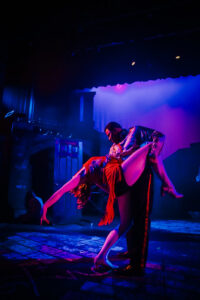
Don’t Fall for Urgency
I suppose the common thread is taking my time. We started the pre-production process for Matilda early so we could enjoy our holidays without being rushed. That gave me time to think about what I wanted out of callbacks and if doing something non-traditional might better deliver it. I stretched creating and teaching choreography across rehearsal nights with time to respond to cast input built in between. Somehow, this production gave me space and permission to push back against a false sense of urgency that could have caused me to pull control decisively to myself. Even the number I would revisit now if I could was something I needed to take time on. The insight came too late to rechoreograph and the number was sufficiently successful in spite of that, but I can’t separate the importance of time from what happened there. Matilda has changed me as a choreographer. I’ve embraced the idea that “we’ve got a lot to get through–let’s go slowly.”
